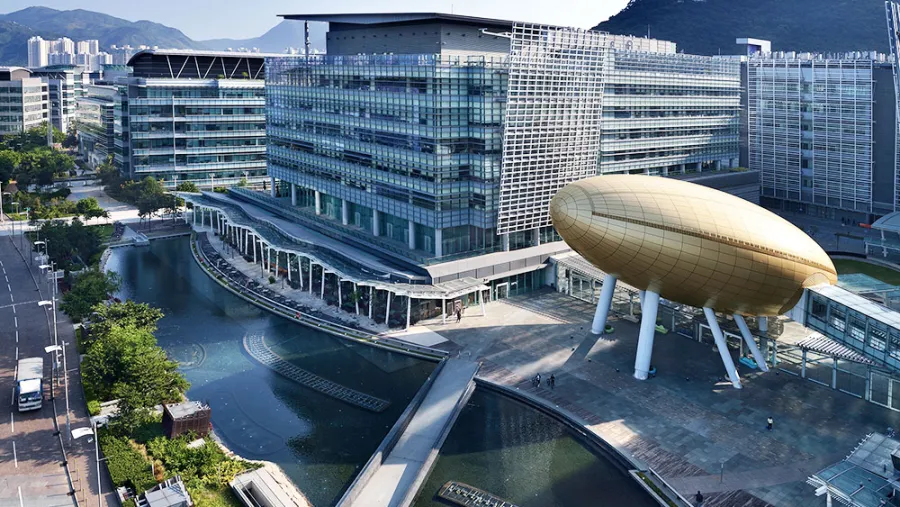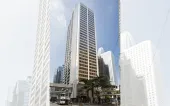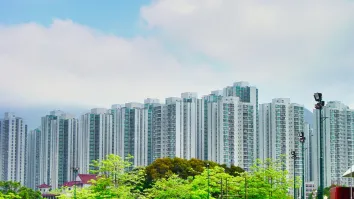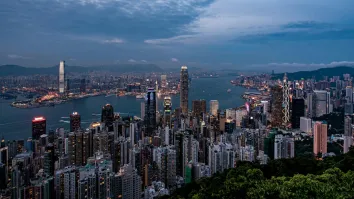
Architects to remodel Hong Kong into a greener, more future-ready city
Highly integrated design and infrastructure that will further link Hong Kong into the Greater Bay Area are expected in the next year.
Sustainability drives have long emerged in an attempt to mitigate the worsening climate crisis, a lesson learned in the hard way. In light of this, Hong Kong architects expect that the city will be remodeled to have a greener design.
On top of this, Hong Kongers will likely see infrastructure projects that will further integrate the city into the Guangdong-Hong Kong-Macau Greater Bay Area development.
“On the whole, the industry is going to lean towards sustainability, net carbon zero, biophilic architecture, wellbeing and urban resilience,” LWK + Partners told Hong Kong Business.
“Therefore, we expect architectural design to be increasingly integrated with public infrastructure and urban programmes, with an increased emphasis on reconnecting with nature.”
The Hong Kong government will be working towards achieving carbon neutrality before 2050, which Chief Executive Carrie Lam said in her 2020 policy address following Chinese President Xi Jinping’s announcement to achieve carbon neutrality before 2060. The government will also be exploring ways to reduce carbon emissions, promote green transportation, and boost investments through green finance plans.
LWK + Partners, for its part, promotes designing zero energy buildings, which are structures that utilise renewable sources to generate the same amount of power it consumes. In a study, conducted by Stephen Lau, LWK + PARTNERS Design Research Director, he noted that architecture is key in constructing zero energy buildings.
For one, the structures could feature outdoor terraces and hanging gardens as well as staircases instead of lift systems. The roofs may also be designed to provide more shading, and in effect, reduce energy demand. Solar panels may also be installed to capture solar power.
Moreover, according to LWK + Partners, the industry will likely utilize building information modeling (BIM) to plan, design, and construct projects. BIM allows architects, engineers and developers amongst others to collaborate by creating a digital model of a building.
“BIM-based project management will continue to gain traction as a global trend with wider adoption across the industry,” the company said.
Aedas, meanwhile, expects commercial properties to be remodeled to adapt to the growing e-commerce trend and the reliance on both online and offline channels. The firm also expects that Hong Kong will see infrastructure that will further integrate it the Greater Bay Area.
“With traditional retail developers adapting to the new norms of online-offline and experiential retail, and more companies embracing the work-from-home or flexi-hour practice, we see more work coming from remodeling and adapting of retail, office and leisure spaces,” Aedas Chairman Keith Griffiths said.
Griffiths noted challenges Aedas faced emerged from the live-work balance and the “blurring boundaries” in retailing, which has led to changes in how the industry designs residential, retail and office spaces. He added architects and designers should be “acutely aware of” these trends, which they must be prepared to respond to actively.
“The e-commerce boom will bring in new opportunities in logistics sector as well. We expect some major infrastructure, civic and public sector works from the government and developments that would facilitate Hong Kong’s integration with the mainland under the Guangdong-Hong Kong-Macau Greater Bay Area Initiative.”
The Greater Bay Area development opens opportunities for Hong Kong to strengthen its position as an international aviation hub and maritime centre and regional logistics hub.
In 2018, Aedas designed the Hong Kong West Kowloon Station that served as the “gateway” to the city and the Hong Kong-Zhuhai-Macao Bridge Hong Kong Port, which is another entry point to Hong Kong.
The construction industry is amongst the sectors hit the hardest by the crisis that limited mobility of nearly everyone. Data from the Census and Statistics Department showed the construction output in the first quarter of 2020 dropped by 6.5% in nominal terms to $52.3b.
Architecture and design in a crisis
“The building industry was used to relying on physical, in-person engagements with clients and partners. Border restrictions therefore pose a huge challenge to the building cycle,” LWK + Partners said.
“Site inspection has become difficult for monitoring progress, not to mention the supply chain disruptions and quarantine-induced manpower shortages which could lead to delays in actual construction work.”
Hong Kong has close to 500,000 registered workers in the sector, which dropped by 10% in April 2020.
In the last years, LWK + Partners operated using an increasingly agile model that allowed it to integrate vertically and horizontally.
Vertically, the firm’s experts in planning, design as well as operations, together with a Design Research Unit, were consulted on sustainable design, net zero and technology; whilst horizontally, LWK + Partners have a multidisciplinary team and inter-office collaborations across 12 studios in China, Southeast Asia, and Middle East and North Africa.
“Our global studio network ensures that local representatives are physically available for clients and projects, and helps balance the risk of lockdown across different regions to maintain smooth operations,” the firm said.
“At the same time, we made significant progress in digital transformation with project designs and progresses well documented on BIM-based project management platforms to facilitate cross-border communications and sharing of records.”
The firm noted through the BIM-based project management all parties are well informed about real-time progress. This also goes hand-in-hand with its vast office network in giving clients and partners a high level of confidence.
Amongst LWK + Partners’ projects in Hong Kong include the 19-storey luxury residential development 10 LaSalle, 22-storey “medi-hotel-like” Ventria Residence and luxury residential and hotel development Harbour Glory.
Aedas, which operates 12 offices in Asia, Europe and North America, likewise hurdled the challenge of keeping business running according to the local conditions in its respective branches.
“We have adapted our work methods to suit each country’s requirements, from mass quarantine to social distancing,” Aedas Chairman Griffiths said.
“It has brought challenges in maintaining continuous operation of our offices, communication with external parties, and also to keep each project on the programme schedule.”
In response to this, Aedas implemented a series of measures across its 12 offices, including the use of digitalized working methods and the Aedas Global Design Network. With these, the firm was able to provide unobstructed service to its clients.
He added that its global presence allowed Aedas closely observe how the internet revolution evolved and accelerated during the crisis. This opened an opportunity for the firm to adapt its designs and provide a more flexible arrangements for functional spaces and create the work-live-recreate dynamic for our future communities
“We continue to design and advocate highly-connected, porous, resilient urban hubs that speaks to our local communities,” Griffiths also said.
“We believe these new urban forms are proven viable solutions for high-density cities and are particularly relevant for a post-pandemic world.”
Aedas was also behind the award-winning The Beacon hotel, the five-level concourse at the Hong Kong International Airport and the redevelopment of The Forum.
In addition, Griffiths noted the global economic recession served as a hurdle to the industry, but not as much in China, Aedas’ main market. This is evident in the decline in the commercial and hospitality sectors, particularly private sectors.



















 Advertise
Advertise






